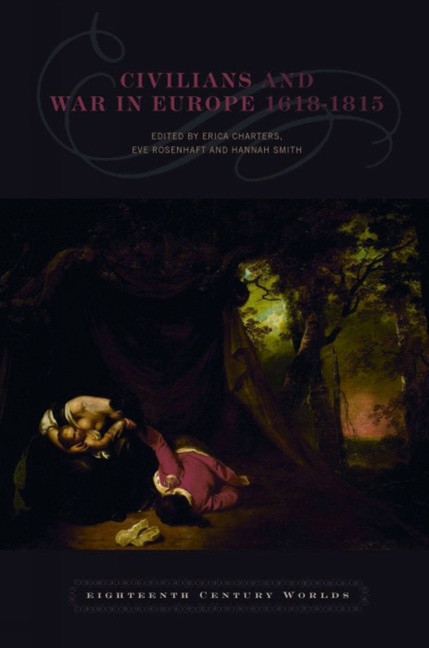Book contents
- Frontmatter
- Contents
- List of Contributors
- Acknowledgements
- List of Illustrations
- List of Abbreviations
- 1 Introduction
- Part I Suffering, Reconciliation and Values in the Seventeenth Century
- 2 Was the Thirty Years War a ‘Total War’?
- 3 Grotius and the Civilian
- 4 War, Property and the Bonds of Society: England's ‘Unnatural’ Civil Wars
- 5 Transitional Justice Theory and Reconciling Civil War Division in English Society, circa 1660–1670
- Part II The State, Soldiers and Civilians
- Part III Who is a Civilian? Who is a Soldier?
- Part IV Contradictions of the French Revolutionary and Napoleonic Wars
- Bibliography
- Index
2 - Was the Thirty Years War a ‘Total War’?
from Part I - Suffering, Reconciliation and Values in the Seventeenth Century
- Frontmatter
- Contents
- List of Contributors
- Acknowledgements
- List of Illustrations
- List of Abbreviations
- 1 Introduction
- Part I Suffering, Reconciliation and Values in the Seventeenth Century
- 2 Was the Thirty Years War a ‘Total War’?
- 3 Grotius and the Civilian
- 4 War, Property and the Bonds of Society: England's ‘Unnatural’ Civil Wars
- 5 Transitional Justice Theory and Reconciling Civil War Division in English Society, circa 1660–1670
- Part II The State, Soldiers and Civilians
- Part III Who is a Civilian? Who is a Soldier?
- Part IV Contradictions of the French Revolutionary and Napoleonic Wars
- Bibliography
- Index
Summary
INTRODUCTION
The concept of ‘total war’ has exercised a powerful influence on the history of conflict. There is no firm agreement on what it means, or to which conflicts it can be applied. Nonetheless, most commentators emphasise three defining characteristics. To be total, a war must entail the complete mobilisation of a belligerent's society and economy, as well as their rejection of any outcome other than the complete destruction of the enemy's resistance and way of life, while its conduct will erode the boundaries between soldiers and civilians. These elements have been detected in a range of major wars by many commentators. However, attempts to refine this definition have merely exposed the concept's serious shortcomings. It is the contention of this chapter that these deficiencies are so fundamental as to invalidate the concept as a means of exploring civilians’ relationship to war.
First, it has proved impossible to escape from the concept's origins as an ideological construct emerging from the controversy surrounding the German General Staff 's management of their country's effort during the First World War. Though the term appeared during 1917, it was not articulated until 1935 when the former commander, Erich Ludendorff, tried to justify his policy both to his countrymen and outsiders. While presented as based on rational, material criteria, the idea is in fact highly emotive and this subjectivity has hindered definition ever since. For instance, Ludendorff presents total war as a necessity in which all the negative elements are off-loaded on to the enemy, while his own side preserves a more honourable character associated with previous forms of war-making.
- Type
- Chapter
- Information
- Civilians and War in Europe 1618–1815 , pp. 21 - 35Publisher: Liverpool University PressPrint publication year: 2012



